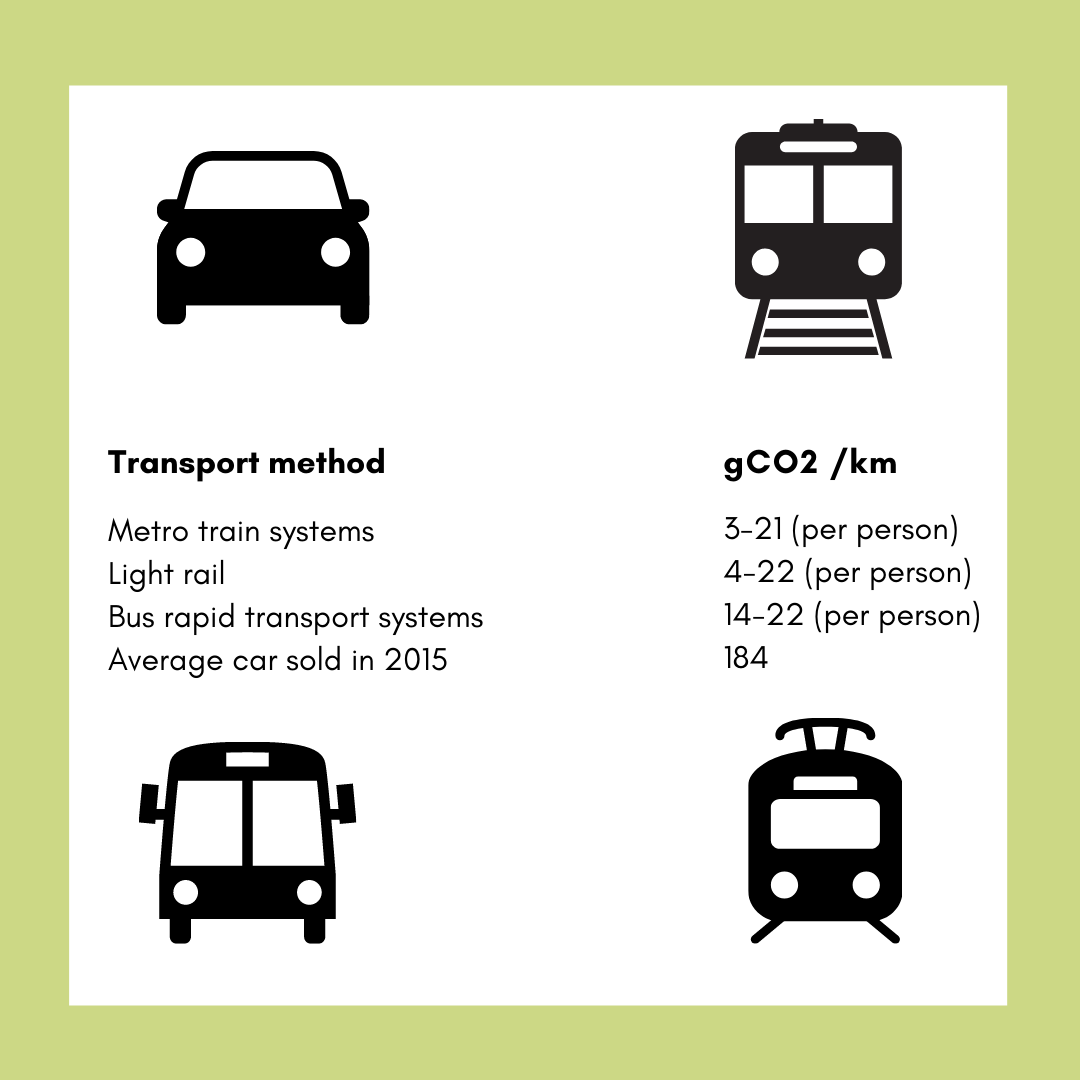
Reduce your transport carbon footprint
Reduce your transport carbon footprint:
The transport sector in Australia is a major source for greenhouse gas emissions. By cutting back on these emissions, we can significantly reduce our carbon footprint. As an individual, there’s several ways you can do it.
Why
Did you know an international scorecard ranked Australia as the second-worst country for transport energy efficiency?
In Australia, transport emissions are responsible for 17% of the country’s emissions, and are the third largest source of greenhouse gas emissions, with the highest rate of growth.
Cars are responsible for roughly half of all transport emissions.
Australia rated so badly for transport energy efficiency because:
High emitting cars, and the lack of greenhouse gas emissions standards in place for cars and heavy vehicles;
The relatively high distances travelled by car per person, compared to similar countries;
Low use of public transport (12% of trips);
Low ratio of spending on public transport compared to roads.
Emissions for different forms of transport.
Did you know, avoiding one long distance economy return flight per year from Sydney to London could save up to 4.9 tonnes of CO2?
Aviation contributes to 2.5% of global carbon dioxide (CO2) emissions, but it’s overall contribution to climate change is actually higher. This is because air travel does not only emit CO2: it affects the climate in a number of more complex ways.
Planes affect the concentration of other gases and pollutants in the atmosphere. Overall, the warming effect is stronger.
Avoiding one domestic return flight from Sydney to Cairns can save up to 0.55 tonnes of CO2.
How
If Australia is to reduce emissions, all sectors including transport must improve. There are several things you can do as an individual to reduce your greenhouse gas emissions:
Go car free
Use public transport
Cycle
Walk if possible
Carpool
If you can, consider making your next car purchase an electric vehicle, electric cars produce fewer emissions overall.
Here’s how you can optimise your driving technique:
Go easy on the petrol and brakes — driving efficiently can help to reduce emissions;
Regularly service your car to make it last longer and keep it more efficient;
Check your tyres. Keeping tyres pumped correctly can reduce emissions;
Vehicle air conditioning and intensive city driving can cause more emissions. Cut down on aircon use and driving in the city if you can.
Use cruise control on long drives - in most cases, this can help to save fuel.
Don’t weigh your car down with extra things that you don’t need on your trip.
Avoid flying
Fly less
Take flights with no stops if you can, because landings and takeoffs use more fuel and produce more emissions;
Fly in economy class. Business class is responsible for almost three times as many emissions as the economy class. In economy class, the flight’s carbon emissions are shared among more passengers; first class can result in nine times more carbon emissions than economy;
If you can’t avoid flying, consider offsetting flights when you make a flight booking or annually, in CliMarch. See www.greenfleet.com.au to calculate and offset emissions from your flights.
Sources:
Australian Government (2017a) Quarterly Update of Australia’s National Greenhouse Gas Inventory: March 2017.
National Transport Commission (2016) Carbon Dioxide Emissions Intensity for New Australian Light Vehicles 2015.
Australian Government (2017b) National Inventory Report 2015.
ACEEE (American Council for an Energy Efficient Economy) (2016) The 2016 International Energy Efficiency Scorecard. Accessed at http://aceee.org/research-report/e1602
Carbon emission calculation for a return flight from Sydney - London and Sydney - Cairns https://www.carbonfootprint.com/
Hannah Ritchie (2020) - "Climate change and flying: what share of global CO2 emissions come from aviation?". Published online at OurWorldInData.org.


